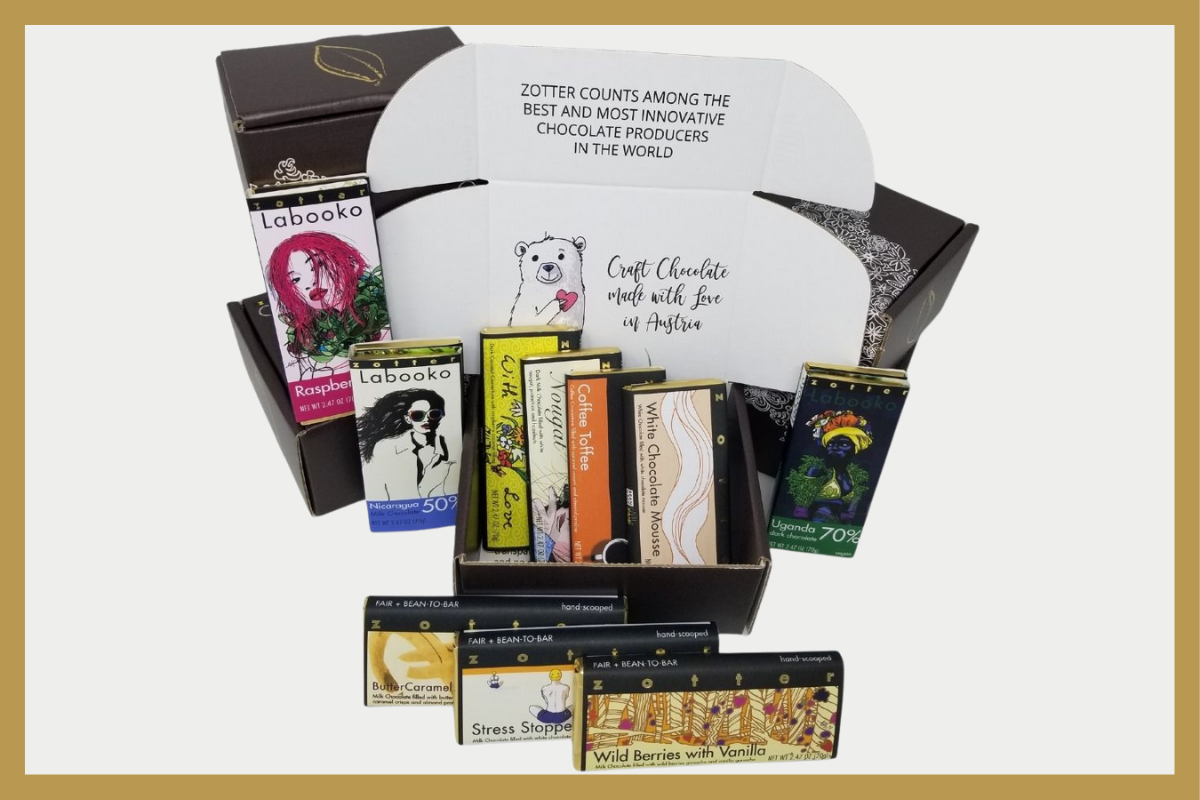Chocolate tasting, akin to wine tasting, is a delightful indulgence that requires more than just biting into a bar of the decadent treat.
For chocophiles and connoisseurs alike, approaching chocolate with a discerning palate can offer a world of aromatic notes and subtler flavors. This experience of tasting chocolate in a nuanced way can turn a simple snack into a journey of the senses.
In this comprehensive guide, we share five smart and accessible tricks that will elevate your next chocolate-tasting experience. From understanding the origins of chocolate to the art of pairings, these tips will have you savoring this beloved confectionery in a whole new light.
1. Master the Art of Chocolate Origins
Just as with coffee or wine, the origin of the chocolate you’re tasting can significantly influence its flavor profile.
There are three main regions that are celebrated for their cocoa beans: South and Central America, the Caribbean, and Africa.
Each region offers a unique taste characteristic that you can train your palate to recognize:
South and Central American Chocolates
These chocolates often evoke floral and fruity flavors. The taste notes can range from tangy red fruit (think raspberry or cherry) to brighter, zingy citrus tones.
Caribbean Chocolates
Cacao from the Caribbean tends to be more delicate, often with a hint of nuttiness or earthiness. High-quality Caribbean chocolate can present an array of subdued flavors, from honey or caramel to roasted nuts.
African Chocolates
The intensity of African chocolate is often attributed to its complex, deep flavor. You might notice fig or raisin notes, alongside rich, full-bodied flavors like coffee or licorice.
Explore chocolates from these regions side by side to truly appreciate the differences. This comparative tasting is an excellent way to hone your palate.
2. Temperature and Texture Matter
Chocolate that’s too cold will have muted flavors, while chocolate that’s too warm can begin to lose its form and oily shine, known as “bloom.” For the best tasting experience, always sample your chocolate at room temperature.
The texture of the chocolate is also crucial. A quality bar should snap cleanly when broken and should have a smooth, even texture when it melts in your mouth. Coarser textures can often indicate a less refined, more gritty chocolate.
3. The Five Senses of Chocolate Tasting
To taste chocolate like a pro, engage all your senses:
Sight
Begin your chocolate evaluation by closely examining its appearance, color, and sheen. Observe if the chocolate has a glossy finish, as this often indicates that the bar has been well-tempered, a process that results in a smooth, shiny surface and a firm snap when broken. This initial assessment can provide valuable clues about the quality and craftsmanship that went into its production.
Touch
Gently run your fingers over the surface of the chocolate. It should feel smooth to the touch, without any rough textures or bumps. Additionally, the chocolate should not leave a greasy residue on your fingers, indicating a high-quality composition without excessive oils.
Sound
When breaking the chocolate, pay close attention to the sound it makes. A clean, sharp snap is a good indicator of high-quality chocolate that has been tempered correctly. On the other hand, a dull thud when the chocolate breaks might suggest that the tempering process was not done properly, potentially affecting the texture and shine of the chocolate.
Smell
Take a moment to inhale deeply through your nose as you hold the chocolate close. Allow yourself to fully appreciate the complexity of its aromas before indulging in your first bite. Pay attention to any subtle scents that emerge, as they can greatly enhance your tasting experience.
Taste
Finally, savor the flavor as the chocolate melts on your tongue. Note the first taste, the mid-palate experience, and the finish (also known as the cocoa breath). Pay attention to any growing or fading notes, and any lingering aftertaste.
4. Pairing Chocolate with the Right Company
Pairing chocolate with complementary flavors can elevate your tasting experience.
Wine and Chocolate
Rich, dark chocolate, with its deep and intense flavors, pairs wonderfully with a robust red wine, such as a full-bodied Cabernet Sauvignon that brings out the chocolate’s fruity and spicy notes, or a fruity Malbec, which complements the chocolate’s richness without overwhelming its taste.
On the other hand, a creamy milk chocolate, known for its smooth and sweet profile, can be beautifully complemented by a lighter red wine, which balances its sweetness, or a sweet white wine, like a Riesling, that contrasts and enhances the creamy texture and flavors of the chocolate.
Cheese and Chocolate
Consider experimenting by pairing a hard cheese, such as an aged cheddar, with a piece of rich dark chocolate. This combination can beautifully balance the sweetness of the chocolate while enhancing the depth and complexity of the flavors in both the cheese and the chocolate. This unexpected pairing might surprise you with how well the distinct flavors complement each other, creating a unique gourmet experience.
Citrus and Chocolate
Adding a zest of orange or a gentle squeeze of lemon over a piece of rich dark chocolate introduces an acidic contrast that highlights the deep, complex flavors of the chocolate.
This combination creates a delightful balance, enhancing the overall tasting experience by blending the sharp citrus notes with the smooth, bittersweet chocolate for a truly unique and satisfying flavor profile.
5. The Aftertaste of Chocolate
The aftertaste, or “cocoa breath,” is a critical part of your tasting. It’s the lingering flavor that remains after you’ve swallowed a bite of chocolate. A complex, high-quality chocolate will have a pleasant, long-lasting aftertaste. A low-quality one, on the other hand, may leave a soapy or bitter note.
Consider keeping a chocolate journal to document your tasting experiences by noting the brand, the region, your preferred temperature, and any combination you find particularly enjoyable.
With these tricks under your belt, you are well on your way to becoming a chocolate-tasting expert. Remember, the key to mastering the art of tasting is to practice regularly and to always approach new tastings with an open mind and an adventurous spirit. Enjoy your chocolate adventure!
About Zotter Chocolates
Embark on a sensory journey with Zotter Chocolates, where every piece is a testament to the soulful essence of Bean-To-Bar, organic, and fair trade practices. Savor the results of 30+ years of passionate craftsmanship, as each bite whispers tales from Austria’s heartlands.
Let the unique and distinct flavors of our chocolates embrace your senses, reminding you of the love and dedication poured into every piece. Our diverse range boasts approximately 170 different varieties, offering something to satisfy every palate.
Will your next favorite be the hand-scooped chocolates or perhaps the Currant’N’Chili, with its unexpected yet harmonious fusion of flavors? Or will you be drawn to the exquisite dark, single-origin Labooko bar, a true purist’s delight? Join us in the pursuit of chocolate perfection, where every piece is a piece of joy, waiting to be discovered.

